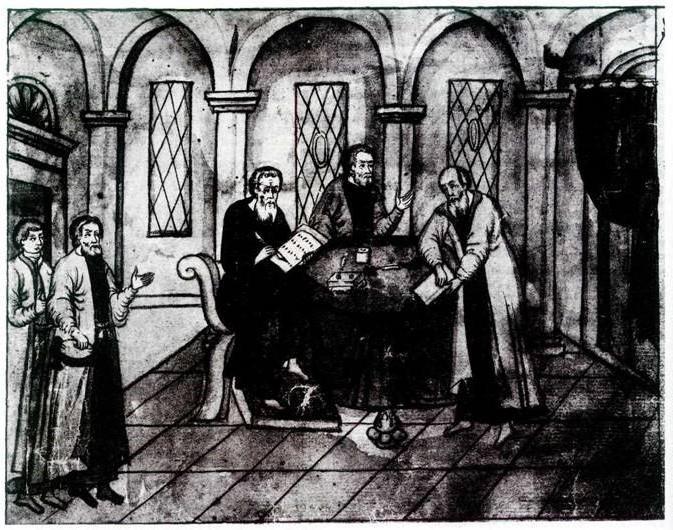An appeal to the first person of the state with a request to solve problems that for some reason are incapable or unwilling to solve by lower authorities is a long-standing Russian custom, the roots of which go back to ancient times. Even in ancient Russia, people turned to princes, and later to kings, in the hope that he would be able to resolve all their difficulties. Such petitions were also of interest to the rulers themselves, since they created what we now call feedback: they provided information about the realities of life of the common people.
Prerequisites for the creation
The larger the state became, the more people sought to appeal to the king directly. Often, attempts to "shout" to the king ended in executions or rebellions. The result, in any case, turned out to be bloody. So, in 1546, Ivan IV, through a false libel, executed several boyars, who allegedly advised Novgorod's oilers to submit a petition to the tsar. A year later, the tsar severely punished seventy Pskov residents who dared to disturb him with a petition in a suburban residence.
It was necessary to provide the people with the possibility of an alternative appeal to the sovereign, which did not cause too much irritation of the autocrat, which, as mentioned above, could well end for the petitioner death. The first attempts of this kind were made under Ivan III, in the Judicial Code of 1497, but they were not crowned with particular success.
Public Administration Reform
The problem of ridding the tsar of unwanted concern for his subjects was solved by Ivan IV, a close associate of the okrug, A.F. Adashev, proposing to create a petition for petition. The main tasks of the new state body were, on the one hand, to create a mediation mechanism between the king and the petitioners, and on the other, to form a barrier to a huge number of petitions sent to the sovereign.
In general, historians disagree on the exact date of creation of this government body. The first documented mention of the petition (this name was called differently) dates back to 1571. However, researcher S.O. Schmidt believes that this order began to function as early as 1549, which is indirectly confirmed by information about Adashev's participation in its creation.
Normative base
The activity of the petition order during its functioning (1549 - 1685) was regulated by the Judicial Code of 1550 and, subsequently, by the Council Code of 1649.
Functional Analysis
In the administrative structure of the Moscow state, the Chalbit Order held a unique position. It was a universal body and was not considered part of any industry orders. Analyzing the activity of this order, the researchers identify several of its main functions.

- First of all, the Litigation Order, as a component of the order system, was the executive authority and performed mainly the administrative-distribution function, that is, it was an intermediate instance between the complainant and the competent authority. In addition, the clerks of this order were engaged in an interim review of the petitions.
- Some historians believe that the Petition Order mainly performed a cassation function, that is, it controlled the activities of the bodies responsible for the execution of petitions.
- Like other orders, Zhelobitny also performed a judicial function, which, however, was not his main task.
- As mentioned above, the Petition Order served in some way as an intermediary between the population and the ruler. The petitions addressed to the tsar’s name were transmitted by the clerks of the order to the emperor himself or to the appropriate authorities, in the “sphere of influence” of which there was a specific question.
By the decision of Fedor Alekseevich Romanov, in 1677 the petition for order was combined with the Vladimir court order. Then in January 1683 (under the reign of Sofya Alekseevna) it was restored, and in 1685 its activities were completely abolished.